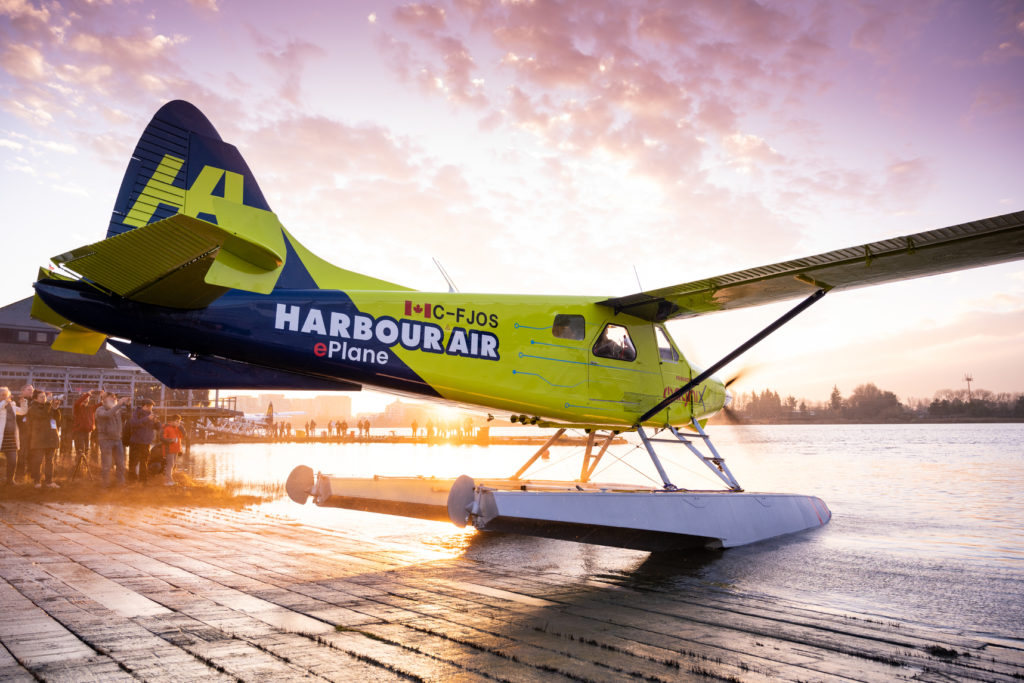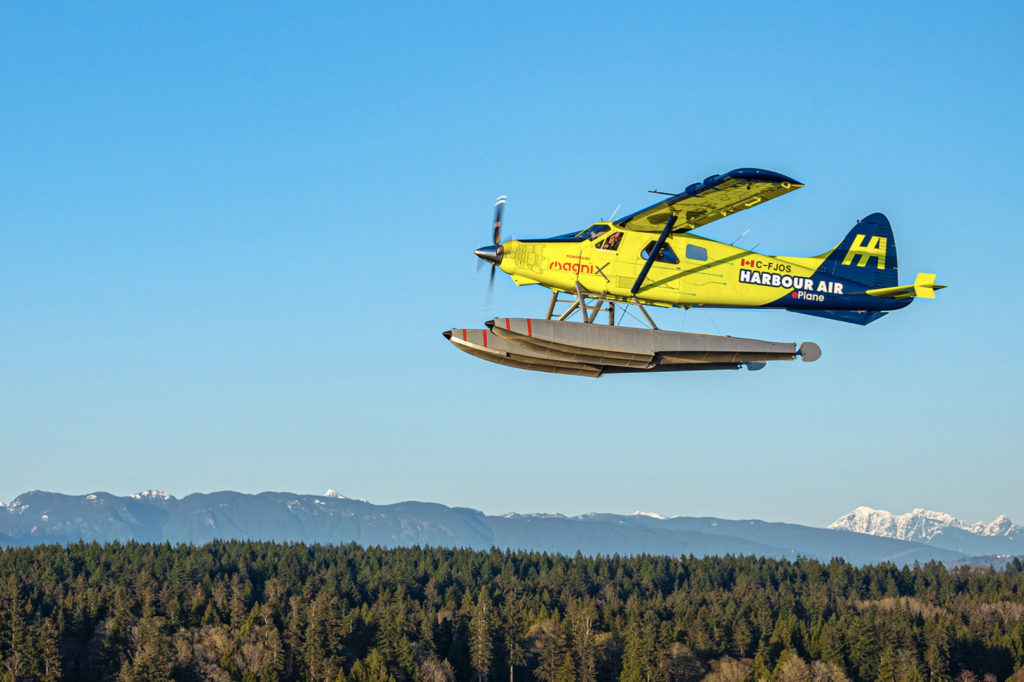Estimated reading time 6 minutes, 11 seconds.
North America’s largest seaplane airline, Harbour Air, has been collaborating with Seattle-based electric motor firm magniX for the past few years on Harbour Air’s ePlane — a de Havilland DHC-2 Beaver specially retrofitted with electric propulsion technology. Now, the two companies are partnering with Swiss battery storage provider, H55, to certify the world’s first electric Beaver (eBeaver) commuter airplane through a supplemental type certificate (STC) program.
Announced April 20, the three companies will work with Transport Canada to certify the installation of the magniX electric propulsion unit and the H55 enhanced battery system on the eBeaver — working towards Harbour Air’s goal of operating an all-electric commercial seaplane fleet.

In December 2019, Harbour Air made aviation history when the eBeaver flew for the first time, powered by the 750-horsepower magni500 electric motor, on a test flight from Vancouver International Airport’s floatplane terminal. The airline’s CEO and founder, Greg McDougall, was at the controls.
Since then, flight tests with the eBeaver prototype have been ongoing “to measure and collect data on cruise performance and take-off thrust efficiency; electro-magnetic interference; battery management software logic; noise levels; and more,” Harbour Air said in a press release.
McDougall feels confident in his goal of converting Harbour Air’s fleet of more than 40 seaplanes into aircraft driven by electric motors; though there have been a few challenges so far. Back in 2020, the airline experienced some “glitches” with the magniX motor, which was sent back to magniX to be “reworked.” That issue has since been resolved.
Harbour Air also experienced challenges with the battery pack used on the original test flight. “It was quite heavy and low energy density,” McDougall said. The lithium-ion batteries used on the original flight brought the ePlane to its gross weight, and only had a 15-minute endurance with a 25-minute reserve.
Enter H55, which produces highly efficient, certified battery packs.
“H55 will provide proven modular battery technology to expand the ePlane’s balance to weight ratio and endurance,” the press release reads. “The company’s battery modules have one of the highest energy densities on the market and will provide the entire energy storage system and redundant battery monitoring at the cell level for the eBeaver.”
Commenting on the new partnership, André Borschberg, H55 executive chairman, said: “We have been attracted by Harbour Air and magniX’s vision, pioneering spirit, and commitment to make aviation clean. . . . We all understand that the path to electric aviation is complicated. But at the same time by joining forces, our combined experience will lead to quicker certification. And this in turn will offer a fast and safe way to reach the market and popularize electric aviation.”
Roei Ganzarski, CEO of magniX, added: “This partnership is another step forward in our vision of making emission free, all-electric aircraft a reality. With Harbour Air leading the way to become an all-electric airline, [and] H55’s battery technology and magniX’s flight-proven propulsion, we are looking at an electrifying future.”

McDougall, too, hopes the new partnership will allow Harbour Air to “lead the global push for electric aviation.”
McDougall founded Richmond, B.C.-based Harbour Air in 1982 with just two seaplanes. In 2015, a motorcycle manufacturer, China-based Zongshen Industrial Group, acquired a 49-percent interest in the airline, with plans to export Canada’s floatplane expertise to China. However, Harbour Air recently confirmed that Zongshen is no longer a shareholder. With the challenges that were happening in China (with the coronavirus), the companies agreed that it would be better for Harbour Air to focus on British Columbia.
Now moving forward with magniX and its newest partnership with H55, Harbour Air said it intends to work with its partners on design optimization for the electric propulsion unit, energy storage system, and related aircraft systems based on ongoing flight testing.









Great story. I hope it works in the long term.
Where will the battery be located?
Normally fuel weight is distributed in the inboard section of the wing.
A pioneering spirit and an all-electric safe and emission-free as the way forward for commercial flights, great and revolutionary.
As for cars, how to cope with distances and weight?